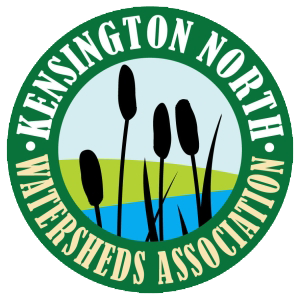Recently, Kensington North Watersheds Association has been reaching out to households, local businesses, and the agricultural community to raise awareness on the risks of hazardous waste and encourage proper disposal. We released a series of articles on hazardous wastes describing everything from what hazardous wastes are and how to get rid of them, to how to make your own safe and “greener” alternative cleaners. This article will serve as an overview on all things hazardous waste, in case you missed any previous articles, or you need a refresher!
Household hazardous wastes are leftover, or unwanted household products that are either flammable, explosive/reactive, corrosive, and/or toxic. Common and well-known examples of these include old paints (even old paint cans, as they still have paint residue), automotive products like motor oil and oil filters, and fertilizers or pesticides for your lawn and garden. However, there are many more inconspicuous hazards that we use everyday. These include household cleaners, laundry products, cosmetics, and even personal care items like our shampoos, lotions, and deodorants. The important thing to note is that most of these products are only considered hazardous wastes if there is any leftover amount of product that you no longer want. If you use your products to completion, most of them can simply be rinsed and then thrown out according to the packaging (for example, recycled if metal or #1-5, waste if #6).
It’s important to dispose of our hazardous wastes correctly; therefore, we shouldn’t pour hazardous products down the drain or flush them down the toilet. Our household septic systems and town wastewater treatment facilities are designed to treat biological waste, not hazardous waste. This means the hazardous chemicals could pass right through the system untreated and get released back into our ground and surface water. The same is true for throwing hazardous waste out into our regular waste carts. When garbage is taken to the landfill, it slowly breaks down and forms a liquid called leachate. Leachate is treated and eventually released back into our water, but these systems are not designed to treat hazardous chemicals that might be in the leachate.
So, what do you do with your hazardous wastes? Take them to a Waste Watch Drop-off Centre (WWDC)! There are six locations on PEI, the closest to Kensington being New London. All WWDC accept household hazardous wastes for free, and will dispose of them in a safe manner. Although it would be convenient to collect these products curbside, due to their hazardous nature it would not be safe and would be very costly. However, there’s plenty of reasons to take your special disposal items to a WWDC. Besides being able to drop off your hazardous wastes, you can also drop off old tires, white goods (old refrigerators, stoves, other appliances), TVs, electronics, and more, all for free. For more information on disposal, check out Island Waste Management Corporation’s website at www.iwmc.pe.ca.
By taking your unwanted, hazardous wastes to an Island WWDC, you’ll be helping divert harmful ingredients from our landfill and protecting our ground and surface water. Not only will this help extend the life of the landfill, but it will ensure we have safe, clean water and soil for years to come. PEI is already the nation’s leader in waste diversion, so let’s keep it that way!
Published in The County Line Courier, Vol. 27, No. 21, Pg. 07.
